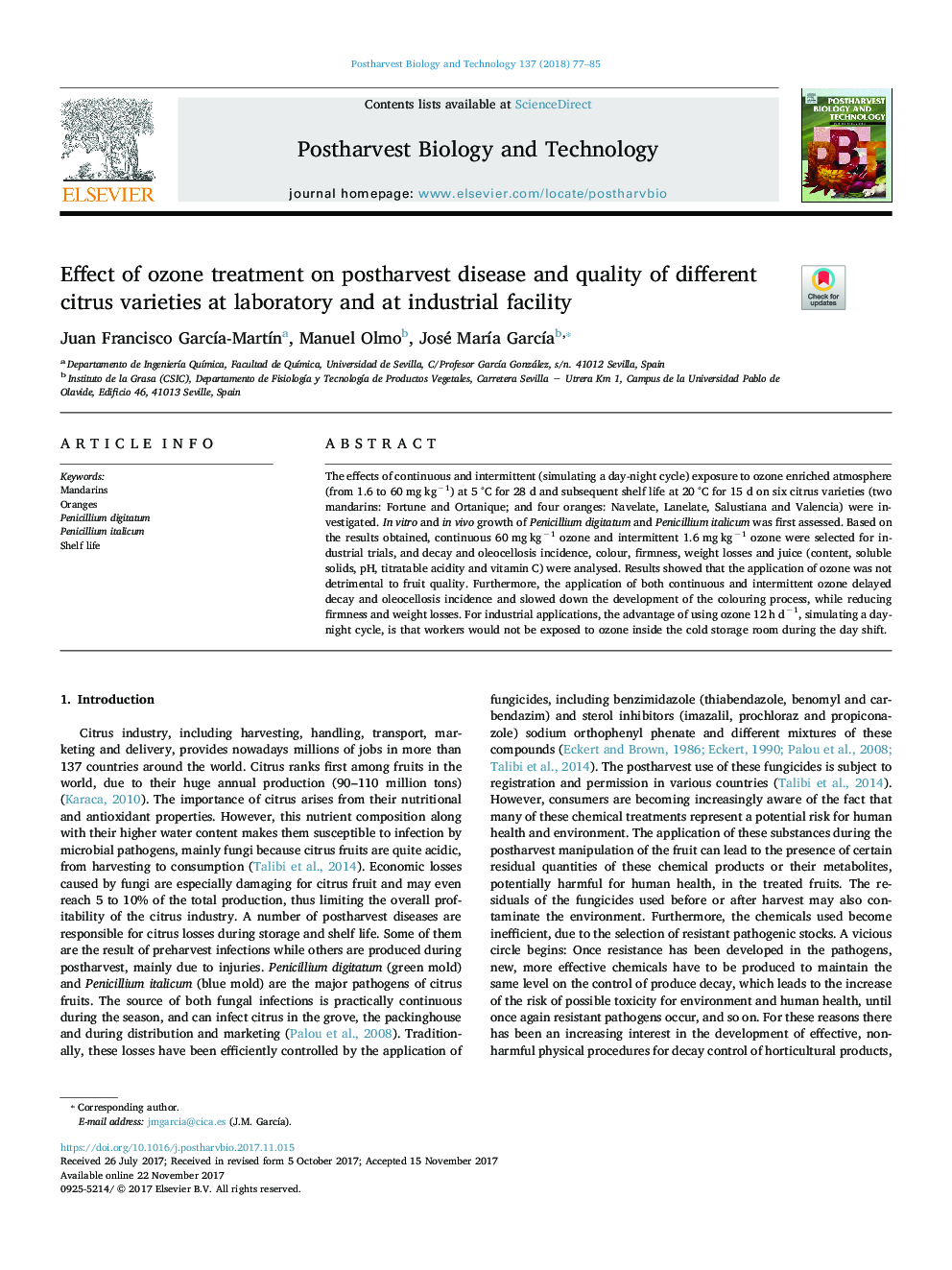| Article ID | Journal | Published Year | Pages | File Type |
|---|---|---|---|---|
| 8882021 | Postharvest Biology and Technology | 2018 | 9 Pages |
Abstract
The effects of continuous and intermittent (simulating a day-night cycle) exposure to ozone enriched atmosphere (from 1.6 to 60 mg kgâ1) at 5 °C for 28 d and subsequent shelf life at 20 °C for 15 d on six citrus varieties (two mandarins: Fortune and Ortanique; and four oranges: Navelate, Lanelate, Salustiana and Valencia) were investigated. In vitro and in vivo growth of Penicillium digitatum and Penicillium italicum was first assessed. Based on the results obtained, continuous 60 mg kgâ1 ozone and intermittent 1.6 mg kgâ1 ozone were selected for industrial trials, and decay and oleocellosis incidence, colour, firmness, weight losses and juice (content, soluble solids, pH, titratable acidity and vitamin C) were analysed. Results showed that the application of ozone was not detrimental to fruit quality. Furthermore, the application of both continuous and intermittent ozone delayed decay and oleocellosis incidence and slowed down the development of the colouring process, while reducing firmness and weight losses. For industrial applications, the advantage of using ozone 12 h dâ1, simulating a day-night cycle, is that workers would not be exposed to ozone inside the cold storage room during the day shift.
Related Topics
Life Sciences
Agricultural and Biological Sciences
Agronomy and Crop Science
Authors
Juan Francisco GarcÃa-MartÃn, Manuel Olmo, José MarÃa GarcÃa,
